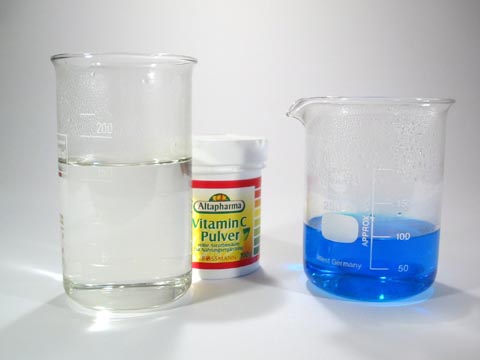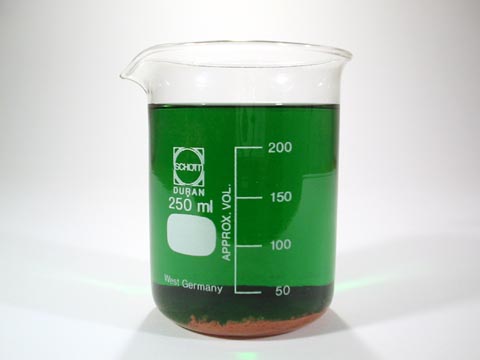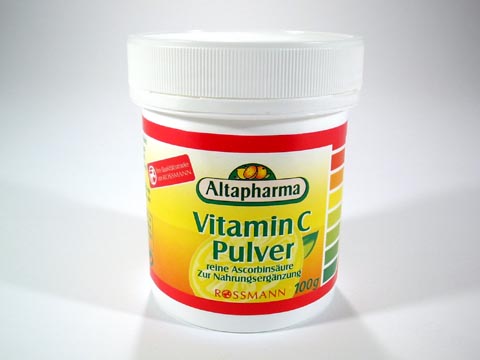

 - and the solution above turned ever so slightly green -
indicating a very thin oxide layer! I guess that's to be expected with finely divided copper like that; even copper sheets tarnish after a while.
- and the solution above turned ever so slightly green -
indicating a very thin oxide layer! I guess that's to be expected with finely divided copper like that; even copper sheets tarnish after a while.

 ).
Copper ascorbate - I'm not sure. It would imply that ascorbic acid is stronger than H2SO4, which surely it is not. Yet the colour change seems to
suggest that. It baffled me too.
).
Copper ascorbate - I'm not sure. It would imply that ascorbic acid is stronger than H2SO4, which surely it is not. Yet the colour change seems to
suggest that. It baffled me too. 
 .
. 


| Quote: |


 ). This was unsuccesful, the precipitate retained its origional dark color.
). This was unsuccesful, the precipitate retained its origional dark color. . I believe the fact that this vit C is ascorbic acid and sodium
ascorbate may have reduced my yields due to not all 500mg being ascorbic acid which is necesary for this reaction.
. I believe the fact that this vit C is ascorbic acid and sodium
ascorbate may have reduced my yields due to not all 500mg being ascorbic acid which is necesary for this reaction. )
)| Quote: |






| Quote: |

| Quote: |
| Quote: |
| Quote: |



| Quote: |


 .
. | Quote: |
| Quote: |

